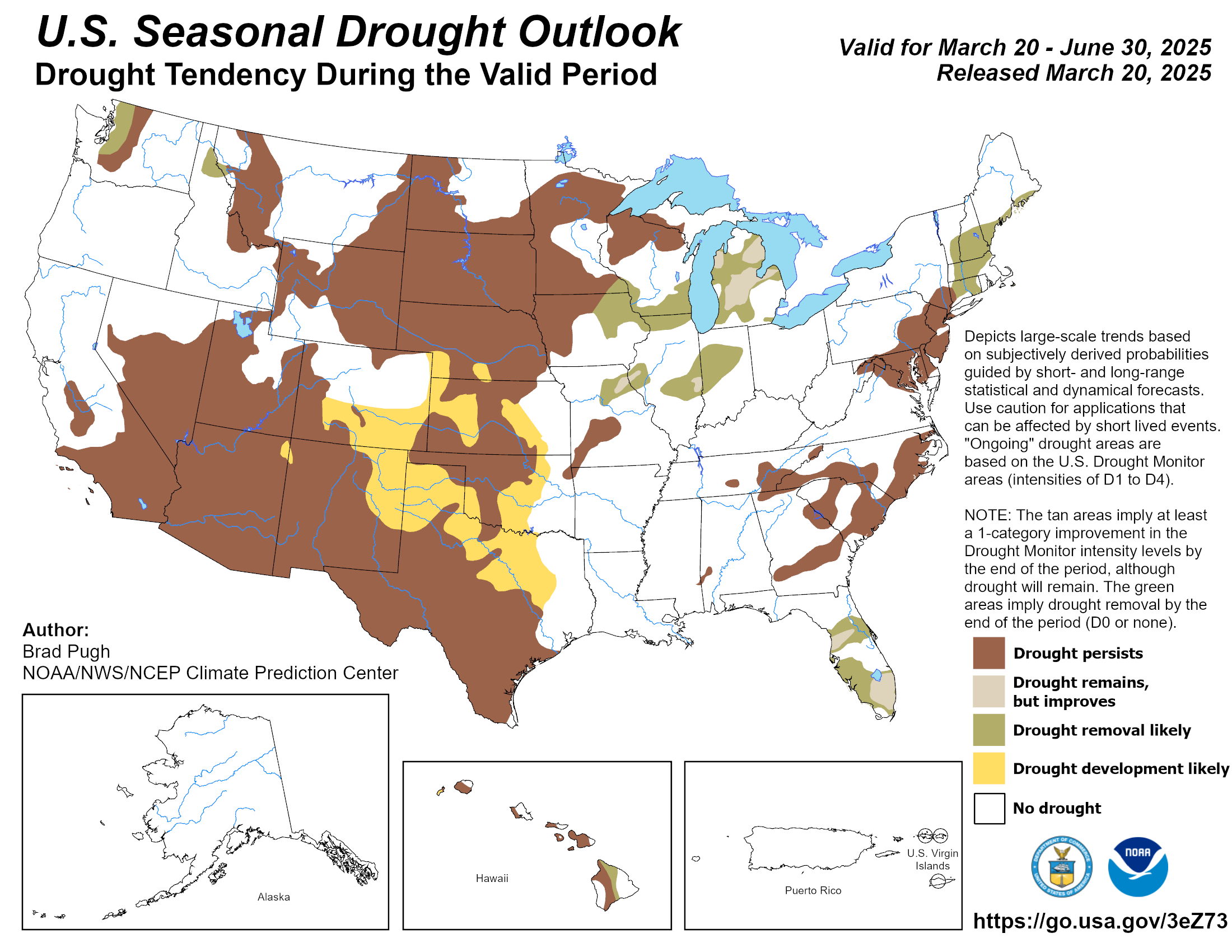Drought conditions are expected to continue in the Rocky Mountains, Southwest and southern Plains, according to NOAA’s Spring Outlook.
Forecasters at NOAA’s Climate Prediction Center predict above-average temperatures for the East and Gulf Coast regions, while drought conditions continue in the Southwest.
Significantly reduced flood risk is expected over much of the U.S. this spring, the researchers added. This largely due to below-average precipitation during the winter months in the East Coast and much of the western U.S.
“We do not anticipate widespread moderate or major flooding this year,” said Ed Clark, director of NOAA’s National Water Center.
Moderate-to-exceptional drought conditions currently exist across more than 40 percent of the continental U.S, the outlook noted.
Drought conditions are likely to persist in the Southwest and parts of the Rocky Mountains while drought improvement is forecast for the Great Lakes region, the result of persistent above-average temperatures in the west and above-average precipitation expected in the Midwest.
The forecasters estimate a 75 percent chance of ENSO-neutral conditions, meaning no La NIna or El Nino.
“La Nina’s influence on the Spring Outlook is limited as it weakens entering the spring months,” said Jon Gottschalck, chief of the Operational Prediction Branch, NOAA’s Climate Prediction Center. “Other factors such as soil conditions and shorter-term climate patterns are more evident and influential when a strong ENSO signal is not present.”
Map downloaded from NOAA Spring Outlook report





















 Trump’s Auto Tariffs to Cover Hundreds of Billions of Dollars of Vehicle, Parts Imports
Trump’s Auto Tariffs to Cover Hundreds of Billions of Dollars of Vehicle, Parts Imports  Allstate: How Can You Save on Auto Insurance?
Allstate: How Can You Save on Auto Insurance?  Root, Hyundai Capital America Strike Embedded Insurance Deal
Root, Hyundai Capital America Strike Embedded Insurance Deal  USDA Opens 59% of Federal Forest for Logging to Manage Wildfire Risk
USDA Opens 59% of Federal Forest for Logging to Manage Wildfire Risk 